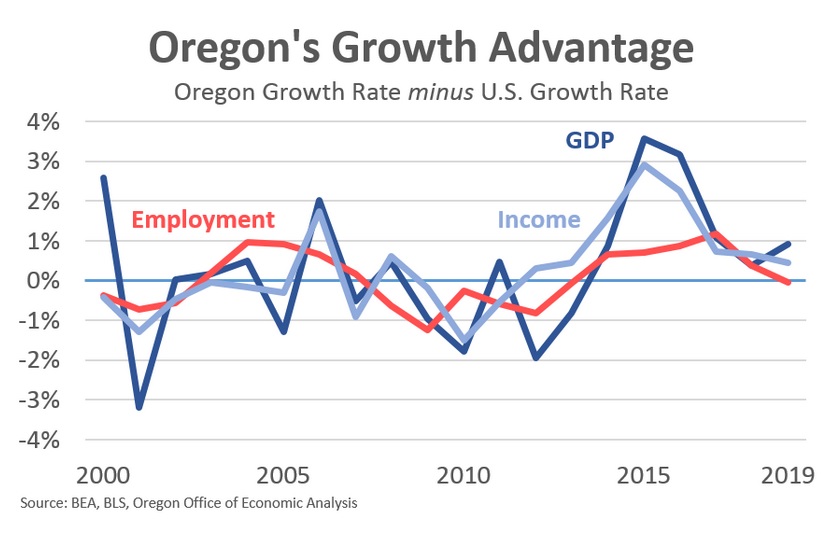 [5]
[5]
By Josh Lehner
Oregon Office of Economic Analysis
Like the nation overall, Oregon is transitioning down to more sustainable rates of growth. Job gains are roughly in-line with what underlying demographics suggest the state needs to hold the unemployment rate steady. Eventually the cyclical drivers of growth will slow further and gains will be driven by productivity and the number of workers.
Historically Oregon’s industrial structure, productivity, and ability to attract and retain young, working-age households has driven faster growth than the nation overall. Today Oregon continues to outpace the typical state in terms of GDP and income, but not employment. Local job growth is matching the U.S. This is one indication that the mix of those long-run drivers of growth may change in a mature expansion, or at least in this mature expansion. We do not know what the eleventh year of an expansion looks like, much less the twelfth or thirteenth year, because the U.S. economy has never been here before.
Our office spent much of 2019 digging into these sources of long-run economic growth: labor force and productivity. We know that population growth is slowing today, and retirements seem to have accelerated. This means Oregon’s labor force is growing slower than expected due to both smaller inflows and larger outflows.
Migration may rebound, driving Oregon’s stronger labor force gains as usual. However, it may not. And should this current pattern continue, it means Oregon will need to rely on stronger productivity gains to grow at a faster rate than the nation overall. If this happens, then we can reasonably expect the blue lines in the chart above to remain positive, even as the red line flattens. While our office tends to focus on the macro, big picture perspective, these gains would be driven at the firm, worker, and/or individual level. Even a tenth or two of a percent per year compounds over time, driving stronger long-run growth.
Now, it is certainly possible this shift in drivers of growth will not occur. Oregon’s growth advantage across these different metrics tend to move together over the business cycle. The question is whether or not they shift, or even diverge in a mature expansion. Our office is closely watching migration, productivity and income growth in the state. One way or another, we’re about to find out the answer to these questions in the year(s) ahead.
For more on productivity, follow the link above or see our latest forecast where we have special sections on this at the statewide and regional levels.